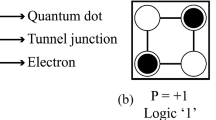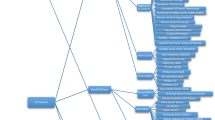Abstract
Logic locking is a protection technique for outsourced integrated circuit (IC) designs that thwarts IC piracy and IC counterfeiting by untrusted foundries. In this technique, the IC design house locks the correct functionality of the circuit using a key that is known only to the trusted entities in the design house. As the correct key values are provided by the design house after production, a malicious adversary in the foundry house will not be able to unlock overproduced or counterfeit ICs. In this paper, we mount linear approximation attacks and differential attacks on random logic locking (RLL), fault-analysis based logic locking (FLL), and strong logic locking (SLL) techniques. We present a formal approach to mount the linear approximation attack on multiple circuit partitions and thereafter combining the approximations to form the attack on a locked logic cone of the circuit. We present our results on ISCAS’85 benchmark circuits. In linear approximation attack, the combinatorial blocks are partitioned and expressed as linear expressions to derive a relation between the primary inputs and the primary outputs of the circuit. The attack aims to determine the linear approximation that has the highest probability of occurrence for the correct key input. In differential attacks, we could recover the embedded secret key in device with attack effort lesser than exhaustive search attack.










Similar content being viewed by others
Notes
An initial version of this paper has been published with title, “Linear Approximation and Differential Attacks on Logic Locking Techniques”, in 32nd International Conference on VLSI Design, VLSID 2019, Delhi, India, January 5-9, 2019. In this paper, we present a formal method to determine the probability of occurrences of the linear approximations across multiple partitions that will guide an cryptanalyst to choose suitable approximations to recover the secret key.
References
Abdel-Hamid AT, Tahar S, Aboulhamid EM (2004) A survey on IP watermarking techniques. Design Automation for Embedded Systems 9(3):211
Dupuis S, Ba PS, Di Natale G, Flottes ML, Rouzeyre B (2014) A novel hardware logic encryption technique for thwarting illegal overproduction and hardware trojans. In: 2014 IEEE 20th international on-line testing symposium (IOLTS). IEEE, pp 49–54
Garg S, Rajendran J (2017) Split manufacturing. In: Hardware Protection through Obfuscation. Springer, pp 243–262
Guin U, Forte D, Tehranipoor M (2013) Anticounterfeit techniques: from design to resign. In: 14th international workshop on microprocessor test and verification, MTV 2013, Austin, TX, USA, December 11-13, 2013, pp 89–94
Lee YW, Touba NA (2015) Improving logic obfuscation via logic cone analysis. In: 2015 16th Latin-American test symposium (LATS). IEEE, pp 1–6
Li M, Shamsi K, Meade T, Zhao Z, Yu B, Jin Y, Pan DZ (2017) Provably secure camouflaging strategy for ic protection. IEEE transactions on computer-aided design of integrated circuits and systems
Maes R, Schellekens D, Tuyls P, Verbauwhede I (2009) Analysis and design of active IC metering schemes. In: 2009 IEEE international workshop on hardware-oriented security and trust. IEEE, pp 74–81
Plaza SM, Markov IL (2015) Solving the third-shift problem in ic piracy with test-aware logic locking. IEEE Transactions on Computer-Aided Design of Integrated Circuits and Systems 34(6):961
Rajendran J, Pino Y, Sinanoglu O, Karri R (2012) A fault analysis perspective. In: 2012 design, automation & test in Europe conference & exhibition, DATE 2012, Dresden, Germany, March 12-16, 2012, pp 953–958
Rajendran J, Pino Y, Sinanoglu O, Karri R (2012) Security analysis of logic obfuscation. DAC Design Automation Conference 2012:83–89
Rajendran J, Zhang H, Zhang C, Rose GS, Pino Y, Sinanoglu O, Karri R (2015) Fault analysis-based logic encryption, vol 64. https://doi.org/10.1109/TC.2013.193
Roy JA, Koushanfar F, Markov IL (2008) Ending piracy of integrated circuit. In: Proceedings of the conference on Design, automation and test in Europe ACM, pp 1069–1074
Sengupta A, Mazumdar B, Yasin M, Sinanoglu O (2019) Logic locking with provable security against power analysis attacks. IEEE Transactions on Computer-Aided Design of Integrated Circuits and Systems
Shamsi K, Li M, Meade T, Zhao Z, Pan DZ, Jin Y (2017) AppSAT: Approximately deobfuscating integrated circuits. In: 2017 IEEE international symposium on hardware oriented security and trust (HOST). IEEE, pp 95–100
Subramanyan P, Ray S, Malik S (2015) Evaluating the security of logic encryption algorithms. In: 2015 IEEE international symposium on hardware oriented security and trust (HOST). IEEE, pp 137–143
Xie Y, Srivastava A (2016) Mitigating SAT attack on logic locking. In: International conference on cryptographic hardware and embedded systems. Springer, pp. 127–146
Yasin M, Mazumdar B, Rajendran J, Sinanoglu O (2017) TTLock: Tenacious and traceless logic locking. In: 2017 IEEE international symposium on hardware oriented security and trust (HOST). IEEE, pp 166–166
Yasin M, Mazumdar B, Sinanoglu O, Rajendran J (2016) Camoperturb: Secure IC camouflaging for minterm protection. In: 2016 IEEE/ACM international conference on computer-aided design (ICCAD). IEEE, pp 1–8
Yasin M, Mazumdar B, Sinanoglu O, Rajendran J (2017) Security analysis of Anti-SAT. In: 2017 22nd Asia and South pacific design automation conference (ASP-DAC). IEEE, pp 342–347
Yasin M, Rajendran JJ, Sinanoglu O, Karri R (2016) On improving the security of logic locking. IEEE Transactions on Computer-Aided Design of Integrated Circuits and Systems 35(9):1411
Yasin M, Sengupta A, Nabeel MT, Ashraf M, Rajendran JJ, Sinanoglu O (2017) Provably-secure logic locking: From theory to practice. In: Proceedings of the 2017 ACM SIGSAC conference on computer and communications security. ACM, pp 1601–1618
Yasin M, Sinanoglu O (2017) Evolution of logic locking. In: 2017 IFIP/IEEE international conference on very large scale integration (VLSI-SoC). IEEE, pp 1–6
Author information
Authors and Affiliations
Corresponding author
Additional information
Responsible Editor: K. Basu
Publisher’s Note
Springer Nature remains neutral with regard to jurisdictional claims in published maps and institutional affiliations.
Rights and permissions
About this article
Cite this article
Mazumdar, B., Saha, S., Bairwa, G. et al. Classical Cryptanalysis Attacks on Logic Locking Techniques. J Electron Test 35, 641–654 (2019). https://doi.org/10.1007/s10836-019-05838-4
Received:
Accepted:
Published:
Issue Date:
DOI: https://doi.org/10.1007/s10836-019-05838-4




